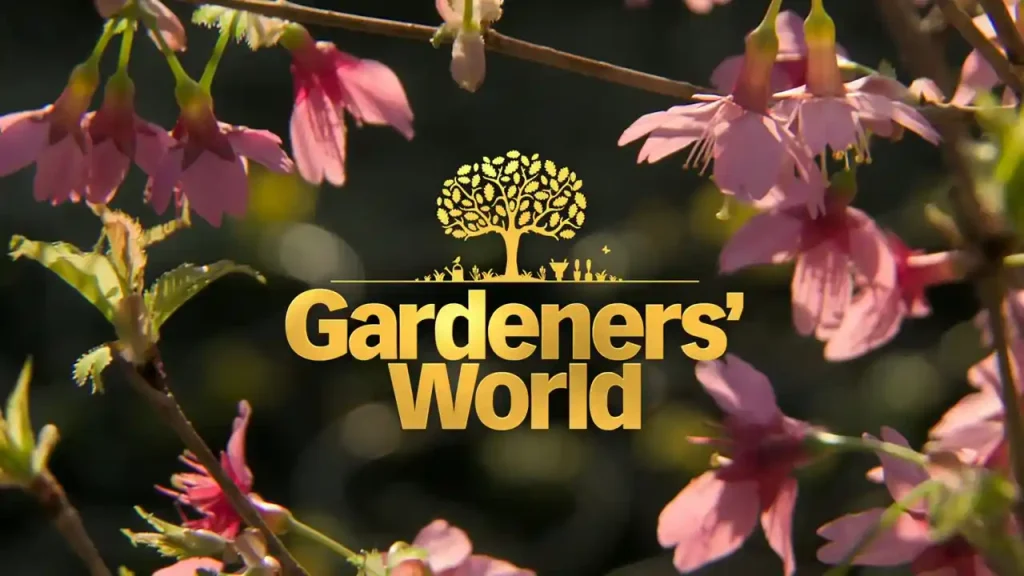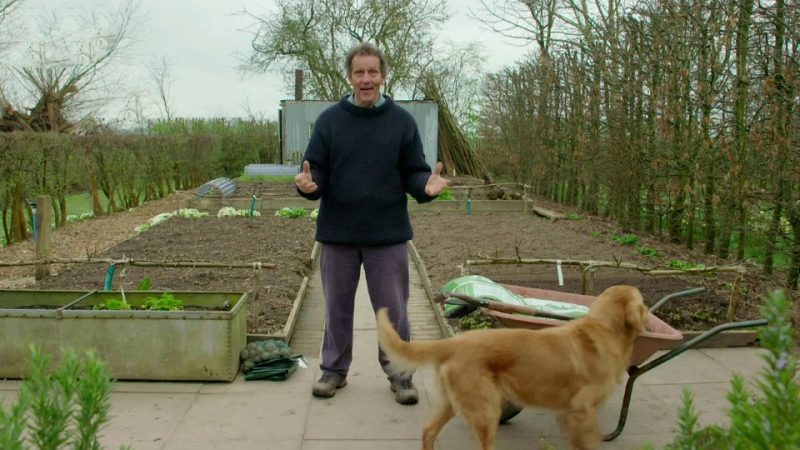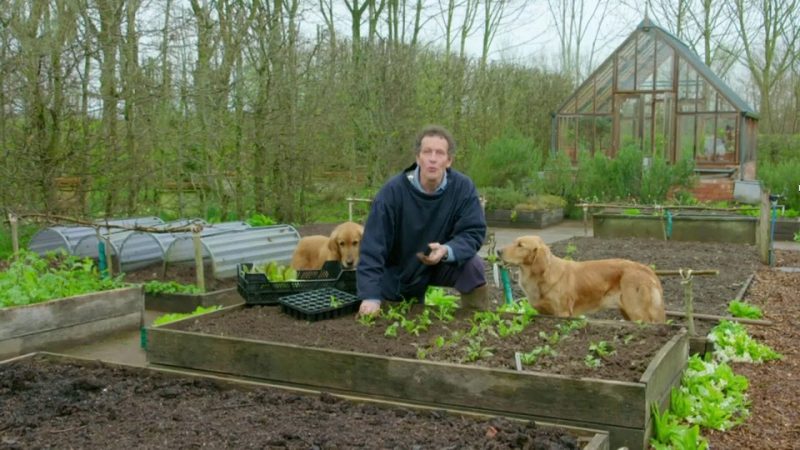Gardeners World episode 1 2017- Over the year, Gardeners World is celebrating 50 years of broadcasting timely advice and inspiration to the nation’s gardeners. Monty kicks off the gardening year from Longmeadow as he shares his tips for pruning, planting up pots for spring colour and sharing his plans for the coming year.
At Packwood House, the extraordinary herbaceous borders come under Adam Frost’s scrutiny as he finds out how they have been planted for maximum colour and impact. Over the series, Carol Klein shares with us some of her heroes of gardening, the people who have impacted the way we garden for the last 50 years. She begins with Beth Chatto.
Gardeners’ World is a long-running British gardening programme that started on 5 January 1968. It was described as “a weekly series for gardeners, advanced and beginners, throughout the British Isles”. It picked up where its forerunner – Gardening Club – left off, and also featured that programme’s much loved presenter, the knowledgeable and down-to-earth Percy Thrower. The programme covers various aspects of gardening, such as plants, wildlife, design, techniques, tips and advice. It also features visits to gardens around the country and interviews with experts and enthusiasts.
The current main presenter is Monty Don, who hosts the show from his own garden in Herefordshire. He is joined by other regular presenters such as Carol Klein, Adam Frost, Arit Anderson, Frances Tophill and Nick Bailey. Gardeners’ World is a popular and influential programme that celebrates the joy of gardening and inspires people to create beautiful and productive gardens of their own.
Gardeners World episode 1 2017 – Expert Gardening Tips for Growing and Pruning Clematis, Bedding Plants, and Grapes
Pruning Clematis: A Simple Rule of Thumb
Clematis is a popular flowering plant that comes in different varieties, each with its unique pruning requirements. If you’ve lost your plant label or don’t know what your plant is called, here’s a simple rule of thumb to follow:
- Don’t prune clematis that flowers on the previous year’s growth (before June in central England).
- Hard prune clematis that flowers on the current year’s growth (from June onwards).
By following this rule, you can ensure that your clematis blooms beautifully year after year.
Bedding Plants: Add a Splash of Seasonal Color to Your Garden
Bedding plants are a great way to add a temporary decorative seasonal display to your garden, whether you have a large public garden or a small front garden. They come in different forms, including seeds, young seedlings (plug plants), and pot-grown specimens.
When planting bedding plants, make sure to choose a spot with well-draining soil and plenty of sunlight. It’s also essential to water and fertilize them regularly to keep them healthy and vibrant.
Grapes: Tips for Indoor Cultivation
While some varieties of dessert grapes can be grown successfully outdoors, they thrive better under glass, even in warmer locations. With a little attention to watering, feeding, pruning, and training, you can get a good crop of grapes year after year.
When planting greenhouse vines, ensure you plant them at the opposite end of the door, with the stems trained along the side of the greenhouse parallel to the ridge of the roof and running towards the door. Plant them at the same depth as they were in the pot, teasing out the roots to spread them out in the planting hole.
To keep your grapes healthy and productive, feed them every three weeks with a high potassium feed, such as tomato fertiliser, once growth starts in the spring. During the growing season, vines benefit from an occasional extra sprinkling of dried blood. Water your vines every seven to ten days in the growing season, and mulch the rooting area with well-rotted manure before growth starts in the spring.
Planting Grapes: Tips and Techniques in Gardeners’ World episode 1 2017
Planting greenhouse vines require some techniques to ensure they grow healthy and productive. Follow these tips for successful planting:
- Plant vines at the opposite end of the door, with stems trained along the side of the greenhouse parallel to the ridge of the roof and running towards the door.
- Plant vines at the same depth as they were in the pot, spreading out the roots in the planting hole.
- Plant your vines between November and December.
By following these planting techniques, you can help your grape vines thrive and produce a bountiful harvest.
Feeding Grapes: Keep Them Healthy and Vibrant
Feeding your grape vines with the right nutrients is essential to keep them healthy and vibrant. Just before growth starts in the spring, sprinkle the rooting area with John Innes base fertiliser and dried blood. During the growing season, vines benefit from an occasional extra sprinkling of dried blood. Once the vine is in full leaf, increase feeding to weekly intervals with a high potassium feed, such as tomato fertiliser. When the grapes start to ripen and colour up, stop feeding with tomato feed, as extra feeding at this time may spoil the flavour of the fruit. By providing your grape vines with proper feeding, you can ensure that they produce sweet and juicy fruits.
Watering Grapes: Essential for Growth and Development
Watering is crucial for the growth and development of grape vines. Vines with roots inside the greenhouse will need more frequent watering than those with roots outside. Water your vines thoroughly every seven to ten days in the growing season, and concentrate your watering during dry spells if the roots are outside the greenhouse.
Mulching: Keep Your Grapes Healthy and Productive – Gardeners World episode 1 2017
Mulching your grape vines is another essential aspect of their care. Just before growth starts in the spring, mulch the rooting area with well-rotted manure. During the summer, mulch the greenhouse borders with straw to keep the atmosphere dry, aiding the pollination of vine flowers and subsequent fruit set.
In conclusion, growing and maintaining clematis, bedding plants, and grapes require specific techniques to keep them healthy and productive. By following the simple rule of thumb for pruning clematis, providing proper care for bedding plants, and giving the right attention to your grape vines, you can ensure that your garden will be full of color and life. Remember to feed, water, and mulch your plants regularly, and with a little effort, you can create a beautiful and thriving garden.
Absolutely! Here’s an FAQ that incorporates SEO elements and draws from the Gardeners’ World episode concepts:
F.A.Q. – Expert Gardening Tips from Gardeners World episode 1 2017
Question 1: How do I prune clematis for the best flowering and growth?
A: Clematis pruning depends on the variety you have. Generally, there are three main pruning groups:
Group 1 (Early Flowering): These bloom on old wood and require minimal pruning. After flowering, remove dead or weak stems.
Group 2 (Large-Flowered Hybrids): These often have two flowering periods. Lightly prune in early spring, removing dead wood and cutting back to a pair of strong buds. After the first flush of flowers, prune again to encourage new growth.
Group 3 (Late Flowering): These bloom on new growth and can be pruned hard in late winter or early spring, cutting back to about 30 cm above ground level.
For specific clematis pruning instructions, it’s always best to consult the plant’s label or a reliable gardening resource.
Question 2: What are your top tips for growing healthy and vibrant bedding plants?
A: Thriving bedding plants require attention to a few key factors:
Sunlight: Choose plants suitable for your garden’s sun exposure.
Soil: Prepare well-draining soil rich in organic matter.
Watering: Keep the soil consistently moist but not waterlogged.
Feeding: Use a balanced fertilizer according to the plant’s needs.
Deadheading: Regularly remove spent flowers to encourage continuous blooming.
Remember, proper plant spacing is essential for good air circulation and disease prevention.
Question 3: Can I successfully cultivate grapes indoors, and if so, how?
A: While grapes are traditionally grown outdoors, it’s possible to cultivate certain varieties indoors with the right conditions:
Variety Selection: Choose compact grape varieties suitable for container growing.
Sunlight: Provide at least 6-8 hours of direct sunlight daily.
Support: Use a trellis or other support structure for the vines to climb.
Pruning: Regularly prune to maintain shape and encourage fruit production.
Pollination: If growing indoors, you may need to hand-pollinate the flowers.
Indoor grape cultivation can be challenging but rewarding with proper care.
Question 4: What are the best fertilizers to use for optimal grapevine health and fruit production?
A: Grapevines benefit from balanced fertilizers with a focus on nitrogen, phosphorus, and potassium (NPK).
Early Spring: Apply a high-nitrogen fertilizer to promote leaf growth.
Flowering: Switch to a fertilizer lower in nitrogen and higher in phosphorus to encourage fruit set.
After Harvest: Apply a potassium-rich fertilizer to help the vine prepare for winter.
It’s also beneficial to incorporate organic matter like compost or aged manure into the soil.
Question 5: Why is mulching important, and how does it benefit my plants?
A: Mulching offers several significant advantages for plant health and garden maintenance:
Moisture Retention: Reduces water evaporation, keeping the soil moist for longer.
Weed Suppression: Helps prevent weed growth, saving you time and effort.
Temperature Regulation: Insulates the soil, protecting roots from extreme temperatures.
Soil Improvement: Organic mulches break down over time, adding nutrients to the soil.
Erosion Control: Prevents soil from washing away during heavy rain.
Choose a mulch material that suits your needs and aesthetic preferences, such as wood chips, shredded bark, straw, or compost.
Conclusion
The first episode of Gardeners’ World in 2017 offers a wealth of knowledge for both novice and seasoned gardeners. From mastering the art of clematis pruning and cultivating vibrant bedding plants to venturing into the world of indoor grape growing, the episode provides valuable insights and practical tips.
The expert advice shared on feeding, watering, and mulching ensures that your garden thrives throughout the seasons. Whether you’re seeking inspiration for your next gardening project or looking to enhance your existing green space, the techniques and recommendations presented in this episode will undoubtedly empower you to create a flourishing and beautiful garden.pen_sparktunesharemore_vert




